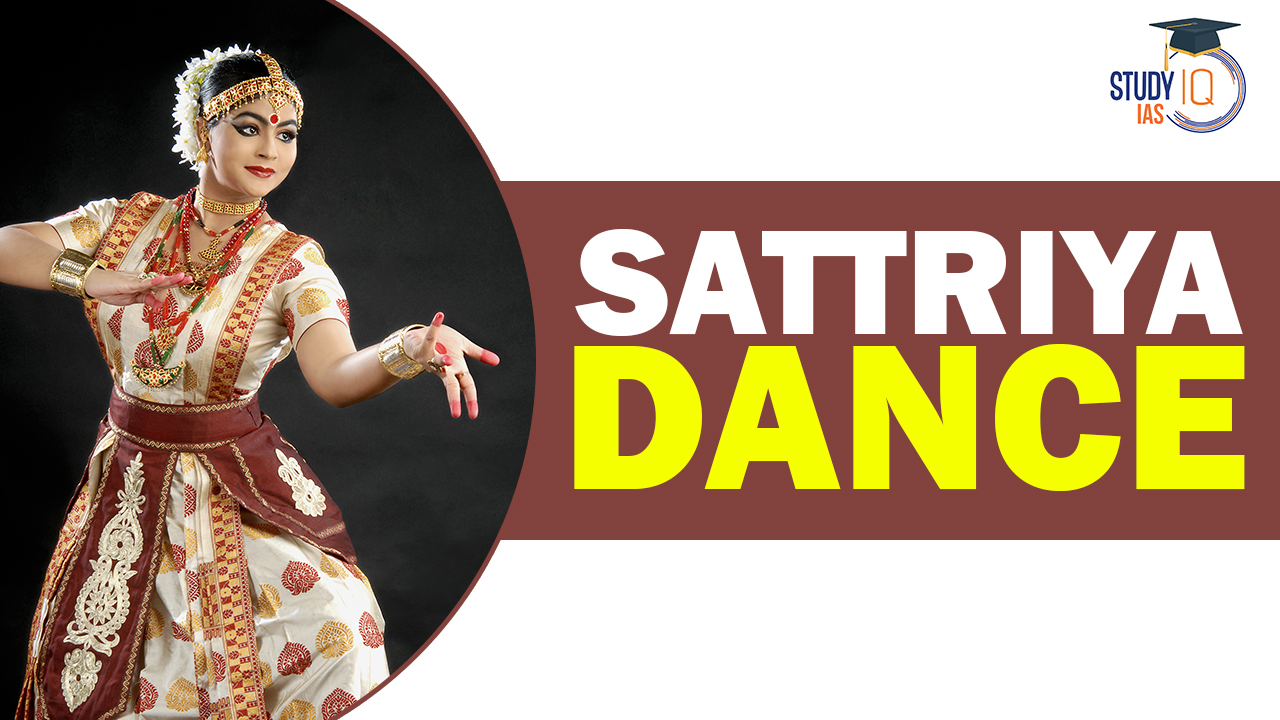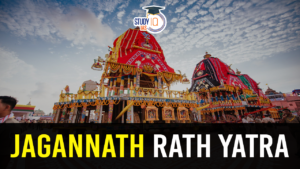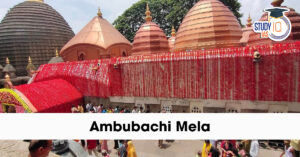Table of Contents
Sattriya, a classical Indian dance form, originated in Assam and evolved from one-act plays known as Bhaona. Established by the polymath Sankardev in the 15th century, it centers around themes of Lord Krishna and other Vishnu avatars. Recognized as one of India’s eight classical dances in 2000, Sattriya integrates abstract, expressive, and dramatic elements. The dance’s history spans ancient texts like Bharata Muni’s Nātya Śāstra, and its vibrant repertoire includes traditional costumes, storytelling, and musical accompaniments like the unique khol drum.
We’re now on WhatsApp. Click to Join
Sattriya Dance: Indian Classical Dance
Sattriya, also known as Sattriya Nritya, is a prominent Indian classical dance form with its roots in Assam. Initially created as part of Bhaona, which are one-act plays, Sattriya dance was established by Sankardev, a 15th-16th century polymath from Assam. These dances are an integral part of the living traditions of Sattras, which are communities of devotees following the Ekasarana dharma, the religion founded by Sankardev.
The themes of Sattriya performances revolve around Lord Krishna, and sometimes include other Vishnu avatars such as Rama and Sita. Stories from the epics Mahabharata and Ramayana are also incorporated. Notably, the dance does not include the character Radha, as the religious philosophy of Mahapurush Srimanta Sankaradeva, the founder, was based on Vedanta, Bhagavadgītā, and the Bhāgavata Purāna.
In 2000, the Sangeet Natak Akademi of India recognized Sattriya as one of the eight classical dances of India. Modern Sattriya has expanded to explore various themes and plays, gaining popularity with performances staged worldwide.
Sattriya Dance History
Sattriya traces its origins to ancient Indian drama and music texts, particularly Bharata Muni’s Nātya Śāstra, dating between 200 BCE and 200 CE. The dance form evolved in Assam, with a history rooted in copper plate inscriptions and sculptures related to Shaivism and Shaktism traditions. The modern form of Sattriya is attributed to Sankaradeva, who systematized the dance using ancient texts and introduced drama and expressive dancing as a form of community religious art devoted to Krishna.
Since the 15th century, Sattriya has been closely associated with the Vaishnava bhakti movement, flourishing in Hindu monasteries called Sattra. Initially, the dance-dramas were written and directed by Sankaradeva and his disciple Madhavadeva, primarily in the 16th century. Originally performed by male monks, Sattriya is now also presented by both male and female dancers. In the latter half of the 20th century, Sattriya Nritya transitioned from the sanctums of Assam’s monasteries to metropolitan stages.
The Sangeet Natak Akademi officially recognized Sattriya Nritya as a classical dance of India in 2000, and it is now performed on global stages.
Sattriya Dance Repertoire
Sattriya encompasses the principles of classical dance, drawing from treatises like Nātya Śāstra, Abhinaya Darpana, and Śārngadeva’s Sangīta Ratnākara. The repertoire includes nritta (pure dance, solo), nritya (expressive dance, solo), and nātya (dramatic play, group).
- Nritta: Abstract, fast, and rhythmic, focusing on the beauty of motion, form, speed, range, and pattern.
- Nritya: Slower and expressive, aiming to communicate feelings and storylines, particularly with spiritual themes.
- Nātya: A dramatic play, often a team performance, incorporating elements of both nritta and nritya.
Sattriya Nritya is a genre of dance-drama that narrates mythical and religious stories through hand and face expressions. The basic dance unit, Mati Akhara, consists of foundational sets dancers learn during their training, subdivided into various styles.
Sattriya Dance Costumes
The costumes of Sattriya dance are gender-specific. The male costume includes a dhoti, chadar, and paguri (turban), while the female costume comprises ghuri, chadar, and kanchi (waist cloth). Traditionally, costumes were white or raw silk, with red, blue, and yellow used for specific dance numbers. As the dance form evolved onto the stage, the design and materials of costumes changed, incorporating silk produced in Assam, such as pat and muga silk.
Costumes for specific plays, like Krishna Nritya and Nadubhangi Nritya, follow color schemes aligned with the attire of Lord Krishna. Traditional Assamese jewelry, including Kopali, Muthi Kharu, and various neckpieces, is worn by performers. Ankiya Naats (dramas) feature character-specific costumes, and the use of masks to depict demons and special characters is unique to this dance form.
Sattriya Dance Music and Instruments
Sattriya Nritya is accompanied by musical compositions called bargeets, often composed by Sankardev and Shree Shree Madhavdev. These compositions are based on classical ragas. The key musical instrument accompanying Sattriya performances is the khol, a two-faced, asymmetrical drum unique to Assam. Other instruments include various types of cymbals (Manjira, Bhortal, Bihutal, Patital, Khutital), the flute (bansuri), and, more recently, the violin and harmonium.
Sattriya Dance Styles
Sattriya performances come in various styles, including Sutradhara, character-specific Bhangi, Prabesh, Nritya, and Jhumura. The Sutradhara style tells a story and presents the spiritual values of Vaisnavism in a classical format. Ankiya Nat is a subgenre consisting of one-act plays dedicated to ballads, dance, and drama.
Character-specific styles focus on different life stages and activities of Radha, Krishna, and the gopis. The Sattriya dance form has evolved from being performed solely by male monks in monasteries to being presented on stage by both men and women, exploring themes beyond the mythological.
Sattriya Dance Exponents
- Jatin Goswami: Renowned as a Sattriya dancer and teacher, Jatin Goswami has played a significant role in promoting and propagating the art form. He has been actively involved in training the younger generation in Sattriya.
- Prateesha Suresh: An accomplished Sattriya dancer, Prateesha Suresh has earned acclaim for her performances that skillfully blend tradition with innovation. She has contributed to the global recognition of Sattriya through her stage presentations.
- Anwesa Mahanta: A dedicated Sattriya artist, Anwesa Mahanta has been instrumental in bringing the dance form to international platforms. Her performances have been appreciated for their grace, precision, and adherence to traditional elements.
- Ghanakanta Bora: Known for his expertise in Sattriya dance, Ghanakanta Bora has been a stalwart in the field. He has not only excelled as a performer but has also made valuable contributions to the academic understanding and documentation of Sattriya.
- Ankita Sharma: As a Sattriya dancer, Ankita Sharma has garnered recognition for her skillful interpretations of traditional themes. Her performances have showcased the aesthetic beauty and cultural depth inherent in Sattriya.
Sattriya Dance UPSC
Sattriya, rooted in Assam and stemming from one-act plays called Bhaona, was instituted by Sankardev in the 15th century. Acknowledged as one of India’s classical dances in 2000, it intricately weaves abstract, expressive, and dramatic elements. Its rich history, drawn from ancient texts like Bharata Muni’s Nātya Śāstra, unfolds in vibrant costumes, storytelling, and musical accompaniments like the distinctive khol drum. The dance’s repertoire embraces nritta, nritya, and nātya, with Sattriya Nritya narrating mythical tales through hand and facial expressions. Renowned exponents like Jatin Goswami and Prateesha Suresh have propelled Sattriya onto global stages, preserving its cultural essence.
| Other Classical Dances of India | |
| Bharatanatyam Dance | Kathak Dance |
| Kuchipudi Dance | Manipuri Dance |
| Kathakali Dance | Mohiniyattam Dance |
| Sattriya Dance | Odissi Dance |


 Bonalu Festival 2025: Date, History, Rit...
Bonalu Festival 2025: Date, History, Rit...
 Puri Jagannath Rath Yatra 2025, History,...
Puri Jagannath Rath Yatra 2025, History,...
 Ambubachi Mela 2025: Dates, Rituals, Sig...
Ambubachi Mela 2025: Dates, Rituals, Sig...





















